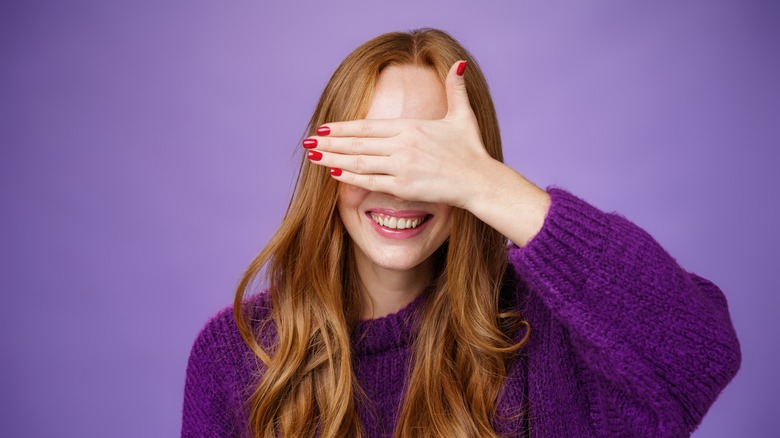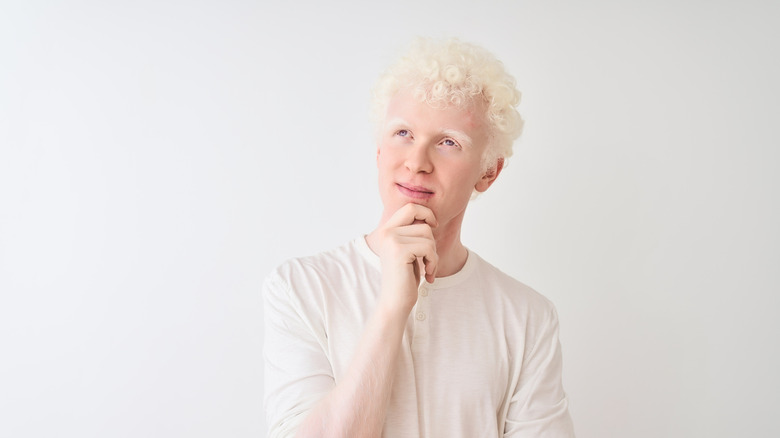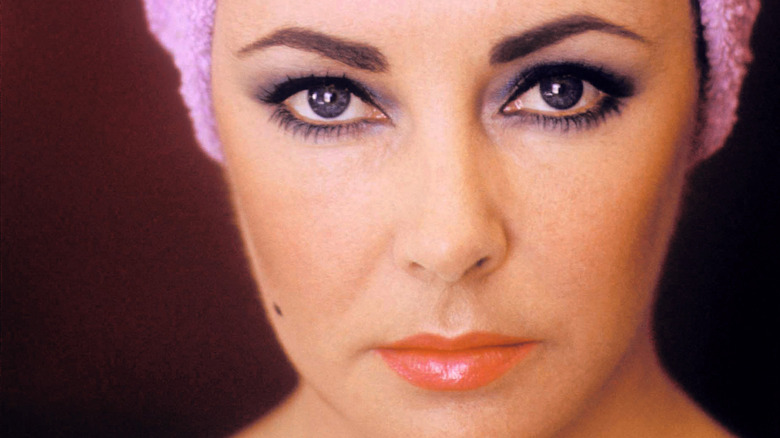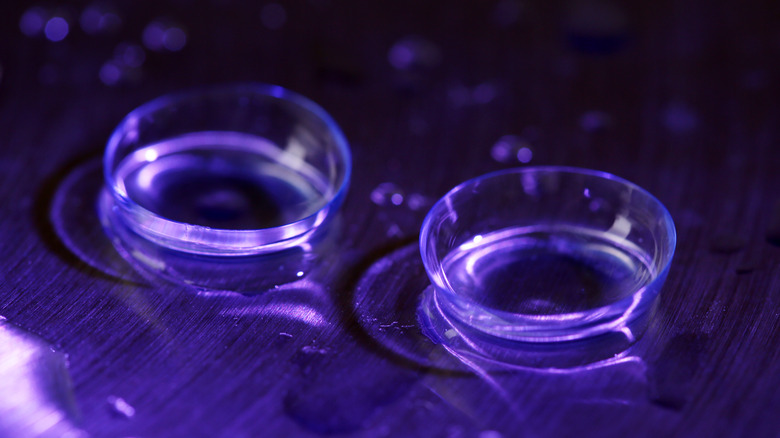Is It Possible To Have Violet Eyes?
The thought of someone having a violet eye color sounds like something right out of a superhero movie. But believe it or not, violet eyes are not limited solely to those with superpowers. While we've all seen people with brown, blue, green, or hazel eyes, finding someone with violet eyes is a rare occurrence. With nearly 80% of the world's population possessing brown eyes, less than 1% of people worldwide have been found to have violet eyes (via World Atlas). How is it that such a rich, rare color is possible?
Experts at All About Vision explain that our eye color is determined by the pigmentation of the iris — specifically the melanin contained within. Melanin is made up of naturally occurring molecules that influence the color of our skin, eyes, and hair (via StatPearls). The more melanin present, the darker your resulting eye color — less melanin, and your eye color will be of a lighter shade. So how much melanin is needed to end up with violet eyes? The answer may surprise you.
Those with albinism can have the appearance of violet eyes
According to experts at Eye Exam, you need a lack of pigment in the iris to achieve what appears to be a violet eye color. This is a condition known as albinism. Yet lack of pigmentation is only half of the recipe needed for violet eyes — the other half is light.
Those with albinism often have eyes that appear semitransparent in color (via Mayo Clinic). Therefore, without pigment, the iris cannot effectively limit the entrance of light into the eye. As a result, light enters the eye and can bounce off of the eyes' red blood vessels, creating a shade of violet.
Over the years, a phenomenon referred to as Alexandria's genesis has been rumored to produce purple eyes at birth or during infancy (via Medical News Today). The presence of such a condition has since been debunked, but it brings up an important distinction. Violet and purple are not one and the same. Educational platform BYJU'S explains that violet is a naturally-occurring color, while purple is a human-made combination of red and blue containing various different shades. Knowing this, people who appear to have violet eyes can be found. But it's incredibly rare — so keep your eyes peeled!
Elizabeth Taylor was believed to have violet eyes
Elizabeth Taylor, the iconic actress who starred in "Cleopatra" and other classic films, was believed to have violet-colored eyes (per LiveScience). From a cosmetic perspective, the starlet was often captured by photographers when she was wearing purple or blue eyeshadow, which could have an effect on how her eye color is remembered from the photographs she appeared in. Because of her natural eye color, her choice of eye makeup coloring may have been intentional to bring out the violet in her irises. Dr. Norman Saffra, an ophthalmologist, told LiveScience, "There are various shades of blues and grays, with many in-between. Violet may have been her typical pigmentation."
According to the American Academy of Ophthalmology (AAO), the appearance of eye color can be influenced by colors in different environments, including the clothing and accessories people wear. Lighting is another factor that can alter the appearance of someone's eye color. Sometimes, light and clothing can work in tandem, like the way that wearing white can cause our eye color to appear softer in shade because it reflects light off of the irises (via LiveScience). It's possible that the clothing Elizabeth Taylor wore, as well as the lighting during photography sessions, may have worked together to give her eyes a richer violet hue.
Ways to enjoy violet eyes for yourself
If you want to experience violet eyes for yourself, there is always the option of trying colored contact lenses. According to Healthline, colored contact lenses are available in both prescription and non-prescription options. You may be surprised to learn that violet and amethyst are two of the most popular colored contact lens choices on the market. You'll want to do your research beforehand, however, and be careful where you purchase the contacts from. Purchasing decorative contact lenses that don't require a prescription or that haven't been approved by the U.S. Food and Drug Administration (FDA) may potentially be damaged or unclean.
Alternatively, rather than changing your eye color, you can always enjoy a bold purple eyeshadow to enhance your natural eye color — just as Elizabeth Taylor did. According to Byrdie, shades ranging from eggplant to lavender work well with eyes that are naturally brown, green, or hazel. Utilizing purple makeup can give your natural eye color contrast that will make all of the color tints pop.




